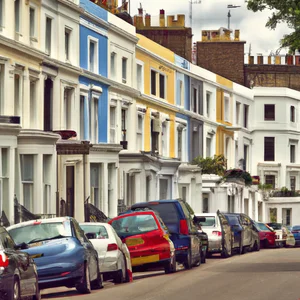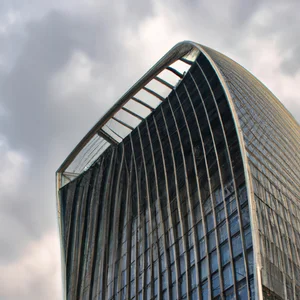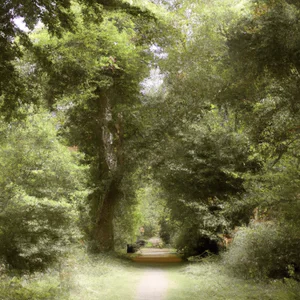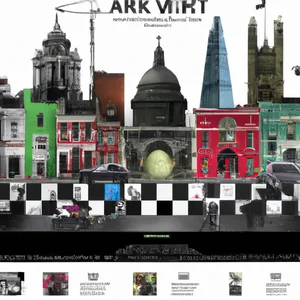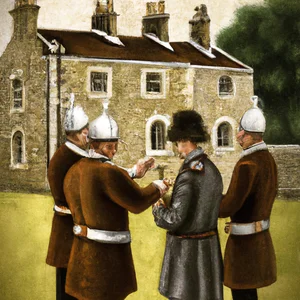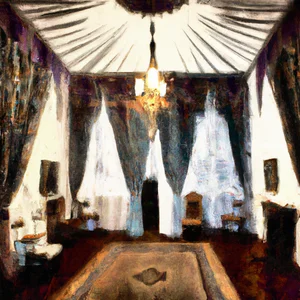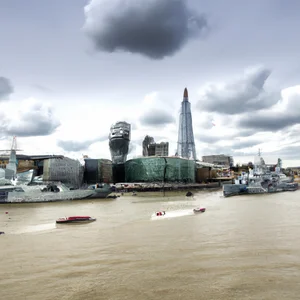Book your experience
Royal Albert Hall: Tour of the iconic Victorian-style concert hall
The Royal Albert Hall, guys! It’s a place you really can’t miss if you’re in London. We are talking about a concert hall which is a bit like the beating heart of classical music, but not only that. It’s a Victorian jewel, with that red facade that shines like a ruby in the sun.
When I first went there, I felt like a kid in a candy shop. Upon entering, the domed ceiling takes your breath away, and the atmosphere is so full of history that you can almost hear the notes of the concerts that have taken place, like an echo through time. And it’s not just for classical concerts, eh! I’ve also seen a couple of modern events, and I have to say the acoustics are crazy. I don’t know how they do it, but every note resonates in a way that gives you goosebumps.
Now, let’s talk a little about the tour. I think it’s one of the most fascinating experiences you can have. They take you around the various spaces and tell stories that make you want to stay there forever. I discovered that it was inaugurated in 1871, which is practically an era ago, and there were concerts by very great artists, from Pavarotti to Led Zeppelin. In short, a true catwalk of legends.
And you know, as you walk by, you can almost imagine the fans milling around, eager to see their idol. And then, there are also the smallest details, such as the beautiful mosaics and chandeliers that seem like they came out of a movie. It makes you think about how much effort goes into every single event held there.
Oh, and I can’t forget to mention the food! There’s a cafe that serves sandwiches that are, well, not exactly gourmet, but I found them pretty good. Maybe they wouldn’t win an award, but they give you that right boost before a concert. In short, the Royal Albert Hall is a place that touches you deeply, whether it is for the music, the architecture or simply for the atmosphere.
If you have some time, it’s definitely worth checking out. Even if you’re not a big fan of classical music, I think it will still blow you away. Who knows, maybe you might find a concert that strikes you and makes your heart beat!
Fascinating history of the Royal Albert Hall
A journey through time
I still remember the first time I crossed the threshold of the Royal Albert Hall. The air was full of history, and every step seemed to recall the great events that had taken place in that magnificent concert hall. Imagine finding yourself in a place where time seems to have stopped, where the notes of famous composers such as Elgar and Holst still resonate between the golden walls. This is not just a building; it is a shrine to music, a symbol of British culture that has fascinated generations.
Opened in 1871, the Royal Albert Hall was conceived by Prince Albert, husband of Queen Victoria, as a tribute to education and culture. Today, it is much more than just an auditorium. It is a hub of creativity that has hosted concerts, dance performances, charity events and even sporting competitions. Every corner tells stories of legendary artists and unforgettable moments.
Practical information
Situated in the heart of Kensington, the Royal Albert Hall is easily accessible by the London Underground. The nearest stops are South Kensington and Gloucester Road, both a short walk from the hall. It is advisable to book tickets in advance, especially for popular events such as the BBC Proms, which take place every summer and attract visitors from all over the world.
An unconventional tip: if you want to avoid the crowds and enjoy a more intimate visit, try going during the morning hours, when the staff is less busy with events and may share curiosities about the history of the building.
A lasting cultural impact
The history of the Royal Albert Hall is not just that of a physical place; it is a reflection of London’s cultural evolution. It has hosted some of the UK’s biggest music and social events, helping to shape the city’s cultural and music scene. Victorian architecture, with its distinctive character, has become a symbol of London and a point of reference for tourists and residents.
Sustainability and responsibility
In an age where sustainability is paramount, Royal Albert Hall is making significant strides. It has implemented green practices, such as the use of renewable energy and waste management, to reduce its environmental impact. Attending events here means not only enjoying a cultural experience, but also supporting an institution that is committed to a greener future.
An experience not to be missed
Don’t forget to visit the Café Consort restaurant inside the Royal Albert Hall, where you can savor dishes inspired by British cuisine while enjoying views of the iconic dome. This is a perfect way to end your visit, reflecting on the stories you have just discovered.
Final reflection
As you walk away from this extraordinary building, we invite you to consider: which history of the Royal Albert Hall struck you the most? Maybe it’s the thought of a concert that changed someone’s life or the image of a large orchestra playing under the watchful eyes of an enthralled audience. In any case, the Royal Albert Hall is much more than just a concert hall; it is a monument to music and culture that continues to inspire and amaze.
Victorian architecture: a masterpiece to explore
A Personal Experience
I remember the precise moment my eyes landed on the façade of the Royal Albert Hall: an immense circular structure, adorned with red bricks and a distinctive glass dome. It was a July evening, and the warm light of the sunset reflected on the windows, creating a play of lights that seemed to dance on the surface. The wonder of finding myself in front of an icon of Victorian architecture made me feel like a small piece of history unfolding within its walls. This is not just a concert venue, but a real monument that tells stories of art, culture and innovation.
Architecture that Tells History
Built between 1867 and 1871, the Royal Albert Hall is a sublime example of Victorian architecture, designed by architect Francis Fowke. Its distinctive shape, a fusion of Romanesque and Byzantine styles, features an impressive amphitheater that can accommodate up to 5,000 spectators. The interior decorations, which include gold details and stucco friezes, are a tribute to the craftsmanship of the time. Don’t forget to admire the ceramic mosaic that frames the main entrance: a work of art that celebrates the sciences and arts, inviting visitors to reflect on the value of knowledge.
Advice from Insiders
A little secret to fully appreciate the architectural beauty of the Royal Albert Hall is to visit the café located on the first floor. From here, you have a panoramic view of the atrium and dome, often overlooked by visitors. While sipping tea, take time to admire the architectural details that you might miss on a quick tour. It’s not just a way to refresh yourself, but also an opportunity to immerse yourself in the magnificence of the structure.
Cultural and Historical Impact
The Royal Albert Hall is not just an architectural jewel; it is a symbol of British culture. It hosts historic events such as the Proms, a classical music festival that annually celebrates the best of live music. The hall has seen world-famous artists perform, from Elgar to The Beatles, and continues to be a point of reference for music and art in London. Its existence has helped shape the city’s cultural scene, making it a hub for music lovers.
Sustainability and Responsibility
The Royal Albert Hall is also committed to sustainability, initiating green practices such as recycling and the use of renewable energy. This effort to reduce environmental impact is an important step to attract an increasingly aware public. Supporting places that are committed to the planet is essential for responsible tourism.
An Activity to Try
If you are in London during the summer season, don’t miss the opportunity to attend an open-air concert in Kensington Gardens, a few steps from the Hall. It is an enchanting experience that combines music and nature, allowing you to appreciate the beauty of architecture in a unique context.
Myths and Legends
A common misconception is that the Royal Albert Hall is not accessible to everyone. In fact, it’s open to anyone, with events ranging from classical music to pop concerts, making it an inclusive venue for all musical tastes.
A Final Reflection
In light of all this, I invite you to consider: what story does a place so steeped in culture and beauty tell us? Next time you stand in front of the Royal Albert Hall, let its Victorian architecture speak to you, revealing not only the past, but also the infinite possibilities of London’s cultural future.
Unmissable events: unique concerts and shows
A Personal Experience
I remember the first time I set foot in the Royal Albert Hall. The air was filled with anticipation and electricity, as the audience crowded into the corridors, animated by a mixture of excitement and curiosity. That day, I attended a concert by the Royal Philharmonic Orchestra, an experience that forever shaped my love of classical music. The notes that hovered in the air seemed to dance between the magnificent vaults of the room, creating an almost magical atmosphere. Each show here is an invitation to discover not only the music, but also the art of a place that has hosted some of the most celebrated moments in musical history.
Practical Information
The Royal Albert Hall is not only an architectural jewel, but also a vibrant center of events. Every year, the hall hosts over 300 performances ranging from classical music to pop concerts, opera and dance. For the most up-to-date information on events, you can visit the official [Royal Albert Hall] website (https://www.royalalberthall.com), where you will find details on upcoming concerts, tickets and times. Be sure to book in advance, as seats for the most popular events tend to fill up quickly.
Insider advice
A tip that few know is to explore less publicized concerts. Often, events such as chamber music evenings or concerts by emerging artists offer an intimate and unique experience. These concerts, while less crowded, can prove to be some of the most memorable moments of your stay. The quality of the Royal Albert Hall’s acoustics makes every note, even the most delicate, a thrilling experience.
Cultural Impact
The Royal Albert Hall has had a profound impact on the musical culture of London and beyond. Opened in 1871, it has become a symbol of artistic excellence and a stage for extraordinary talent. Its tradition of hosting iconic events, such as the BBC Proms, has helped popularize classical music, making it accessible to an ever-wider audience. This place is not just a performance space; it is a point of reference that unites generations of music lovers.
Sustainability and Responsibility
The Royal Albert Hall is actively committed to sustainable tourism practices. From reducing waste to promoting eco-friendly events, the hall is making significant steps towards a more responsible future. Attending an event here also means supporting an institution that cares about the planet.
Immerse yourself in the Atmosphere
Imagine sitting in your seat, with the lights dimming and the audience silent. The strings of a violin begin to play, transporting you to another world. The Royal Albert Hall is not just a place to listen to music, but an immersive experience that engages all the senses. Each concert is a work of art, and each note is an invitation to let go and live in the moment.
An Activity to Try
If you have the chance, don’t miss the chance to attend a live music event at the Royal Albert Hall. Whether it is a classical music concert or a performance by a contemporary artist, each event offers a unique dimension of musical culture. Book your tickets and get ready to live an experience that will remain etched in your memory.
Myths to dispel
A common misconception is that the Royal Albert Hall is only accessible to a musical elite. In reality, there are events for all tastes and budgets. From free concerts to family events, the hall welcomes a wide range of audiences. Don’t let prejudice stop you from discovering the beauty this place has to offer.
Final reflection
Music has the power to bring people together, and when you visit the Royal Albert Hall, you find yourself in a place where every note tells a story. What will your story be after attending an event here? I invite you to reflect on how music can enrich your life and consider a visit to this extraordinary stage.
Guided tours: behind the scenes of music
An unforgettable experience
I remember my first visit to the Royal Albert Hall: the beating heart of London, but also a place steeped in history and culture. I was waiting for the guided tour, curious to discover the secrets that lie behind its doors. When I finally walked through the door, I realized I was about to enter a world where music comes to life in ways I never imagined. My guide, a former musician, told anecdotes that made the air and my spirit vibrate.
Practical information
Guided tours of the Royal Albert Hall are available every day, with different options to suit visitors’ needs. Visits last approximately an hour and a half and include access to exclusive locations such as the stage, recording rooms and dressing rooms. It is advisable to book in advance, especially during high season, as places tend to fill up quickly. For further details and reservations, you can visit the Royal Albert Hall official website.
An insider tip
A little-known tip: don’t just follow the guide. Take advantage of the breaks between explanations to explore the lesser-known corners of the place. Many visitors are unaware that there are fascinating works of art and architectural details hidden in every corner; stop for a moment and let yourself be inspired by your environment.
Cultural and historical impact
The Royal Albert Hall is not just a concert venue, but is a symbol of British musical culture. Opened in 1871, it has hosted historic events, including the Proms, a concert festival celebrating classical music. These guided tours offer an insight into the cultural life of London and how this iconic building helped shape the UK’s music scene.
Sustainability and responsibility
The Royal Albert Hall is committed to sustainability, seeking to reduce the environmental impact of its events. By taking a tour, you can discover how the institution is implementing eco-friendly practices, such as recycling and the use of renewable energy.
Immerse yourself in the atmosphere
Imagine walking the historic corridors, surrounded by photographs of musical legends and works of art that tell stories of bygone eras. The atmosphere is electric, every step resonates with familiar notes and the anticipation of new melodies.
An activity worth trying
After your tour, why not stop by the Royal Albert Hall café for tea afternoon? It’s a perfect way to reflect on your visit and further immerse yourself in musical culture.
Myths to dispel
It is common to think that the Royal Albert Hall is only accessible to a privileged few or those attending high-profile concerts. In fact, guided tours are open to everyone and offer a unique opportunity to explore the richness of this place without having to purchase a ticket for an event.
Final reflection
Have you ever thought about how many extraordinary artists have graced that stage? What stories could the walls of the Royal Albert Hall tell? A visit behind the scenes could give you a new perspective on music and its power to bring people together. Prepare to be inspired!
Exclusive tip: Best times to visit
One late spring afternoon, I found myself in front of the majestic façade of the Royal Albert Hall, the sun filtering through the clouds creating a play of light on the splendid red brick. I had planned to attend a concert and, while I was waiting, I noticed tourists crowding in line to get in. But I knew I had an ace up my sleeve: I had chosen to visit at a less crowded time.
The importance of timetables
If you want to fully experience the enchantment of the Royal Albert Hall, visiting during the morning hours or on weekdays is advice that can make the difference. Opening hours are from 10am to 5.30pm, and in the early hours of the day, the hall is less crowded, allowing you to admire the architectural details without rushing. According to information provided by the Hall’s official website, visitors can also take advantage of special tours during the early hours, a rare opportunity to explore this masterpiece in peace.
An insider tip
Here’s an unconventional tip: try to visit the Hall on days when there are no scheduled events. Many tourists don’t know that, although the Hall hosts events almost every day, there are lulls between events. During these moments, it is possible to explore the common spaces and service areas without the noise of concerts, for a more intimate and personal experience.
Culture and history
The cultural impact of the Royal Albert Hall is undeniable. Built in 1871, it represents a symbol of British musical culture, hosting not only classical music concerts, but also various types of events that reflect the different facets of London society. Visiting the Hall at the right times allows you to grasp the dynamism of this living and pulsating space.
Sustainability and responsibility
In a world increasingly focused on sustainability, it is important to highlight that the Royal Albert Hall is taking significant steps to reduce its environmental impact. Opting for visits at less crowded times not only improves your experience, but also contributes to a more sustainable management of visitor flow.
An experience not to be missed
For an unforgettable experience, I recommend booking a guided tour on weekdays. You can discover the mysteries and behind-the-scenes stories of the Hall, all while enjoying the unique atmosphere of this iconic place.
Myths to dispel
It is common to think that the Royal Albert Hall is only accessible to those attending events. In reality, it is a place open to all, where history and culture can be experienced even outside of performances. Don’t be fooled by this idea: every corner of the Hall tells a story.
A final reflection
When you think of the Royal Albert Hall, what image comes to mind? Imagine walking through its empty corridors, listening to the echoes of great concerts past. We invite you to consider visiting at less conventional times to discover the Hall from a new and fascinating perspective. How could you integrate this unique experience into your next trip to London?
The culture of classical music in London
An enchanting personal experience
I remember the first time I crossed the threshold of the Royal Albert Hall. The scent of the polished wood, the excited buzz of the audience and the warm lights that reflected on the gilding of the stucco created an almost magical atmosphere. Sitting among the spectators, I realized that it was not just a concert, but an experience that united people of all backgrounds, united by a passion for classical music. This room, a true temple of music, was the stage for some of the greatest composers and performers in history.
Classical music, a cultural pillar
London is unquestionably one of the nerve centers of classical music in the world. With its rich history dating back to the 19th century, the Royal Albert Hall has hosted memorable events such as the ‘Proms’, a summer concert festival celebrating classical music in all its forms. Every year, thousands of enthusiasts gather to listen to Beethoven’s symphonies, Puccini’s operas, and compositions by contemporary artists. This is not just an entertainment venue, but a cultural landmark that has shaped the city’s musical identity.
An insider tip
If you want an authentic experience, consider attending a “Prom” during the summer festival. But here’s a secret: book tickets for “Promming”, which allows you to attend standing concerts at an affordable price. This practice offers a vibrant and engaging atmosphere, allowing you to feel part of London’s musical tradition.
Cultural and historical impact
Classical music has a lasting impact on British culture. The works performed at the Royal Albert Hall not only entertain, but educate and inspire generations of musicians and enthusiasts. This place helped spread classical music throughout the country, making it accessible to everyone, not just an elite.
Sustainability and responsibility
In an age where sustainability is paramount, Royal Albert Hall is taking significant steps to reduce its environmental impact. From waste management to the use of green technologies, the hall is taking steps to ensure that the beauty of classical music can continue to flourish for future generations. By participating in events here, you not only support music, but also a responsible initiative.
Soak up the atmosphere
Imagine finding yourself in the heart of London, surrounded by stories of artists who have graced that stage. The architectural beauty of the Royal Albert Hall and its extraordinary acoustics create a sensory experience that goes far beyond listening. Each note seems to dance in the air, enveloping you in a sonic embrace that is hard to forget.
An activity worth trying
For a unique experience, book a guided tour of the Royal Albert Hall, where you can explore not only the main hall, but also backstage, discovering fascinating anecdotes and curiosities about the history of classical music in London. It is an unmissable opportunity for anyone who loves music and wants to deepen their knowledge.
Myths and misconceptions
A common misconception is that classical music is only for an elite audience. In reality, the Royal Albert Hall is a place open to all, with events ranging from operatic music to concerts by contemporary artists. The true beauty of classical music lies in its ability to bring people together, regardless of their musical background.
Let’s reflect together
Classical music is not just a genre, but a universal language that speaks to the heart of each of us. What is your best memory related to a concert? We invite you to reflect on how music can influence our lives and consider a visit to the Royal Albert Hall to experience this first-hand experience.
Sustainability: how the Royal Albert Hall is committed
I remember the first time I set foot in the Royal Albert Hall, an impression that left me breathless. As I lost myself in the magnificence of its Victorian architecture, I noticed one detail that caught my attention: the place’s commitment to sustainability. At a time when tourism and culture are facing the urgency of the climate crisis, the Royal Albert Hall is not only a symbol of music, but also a model of environmental responsibility.
A tangible commitment
In recent years, the Royal Albert Hall has implemented a number of green initiatives to reduce its environmental impact. Among the most significant, the use of renewable energy to power the entire structure and the adoption of recycling practices that involve both staff and the public. According to recent statistics provided by the management team, over 70% of waste produced during events is now recycled, a notable step towards greater sustainability.
An insider tip
If you want an even more immersive experience, I recommend taking part in one of the “green” events that take place throughout the year. These events not only offer amazing performances, but also include discussions on sustainability topics and workshops on eco-friendly practices. It’s a perfect way to combine your passion for music with a commitment to the environment.
Cultural and historical impact
The Royal Albert Hall has always played an important role in London’s musical culture, hosting world-famous artists and historic events. Today, its commitment to sustainability adds a new dimension to its identity, demonstrating that even historic places can evolve and respond to modern challenges. This approach not only improves the image of the place, but also encourages visitors to reflect on the importance of sustainability in their lives.
Responsible tourism practices
If you’re planning a visit, consider arriving by eco-friendly transportation, such as the subway or a bicycle. The Royal Albert Hall is easily accessible by public transport, and this not only reduces pollution but also allows you to enjoy a more authentic experience of the city. Furthermore, the venue offers catering options that use organic and local ingredients, thus promoting sustainable agriculture.
An unforgettable experience
For an activity that will lead you to further discover the Royal Albert Hall’s commitment, I recommend taking a guided tour focused on sustainability. During the tour, you will have the opportunity to explore the hidden aspects of the facility and learn the stories of how the place is trying to make a difference.
Myths to dispel
A common misconception is that historic places cannot be sustainable due to their structures and traditions. In fact, the Royal Albert Hall demonstrates that it is possible to integrate ecological practices into a traditional context, creating a balance between past and future.
In conclusion, I ask myself: how can we, in our small way, contribute to preserving these extraordinary places for future generations? The answer may well lie on your next visit to the Royal Albert Hall, where music and sustainability meet in perfect harmony.
Local Experiences: Enjoy tea near the lounge
When I think of the Royal Albert Hall, I can’t help but remember my first afternoon spent in the nearby Kensington Garden, sipping a fragrant English tea. It was a sunny day, and as the sound of musical notes floated through the air, I felt completely immersed in London culture. The scent of blooming flowers mixed with the aroma of tea, creating an enchanting atmosphere that made the experience unforgettable.
Tea with a view
If you want to experience a special moment after a concert at the Royal Albert Hall, I recommend you visit the Kensington Tea Room, located a few steps from the hall. This cozy café offers a selection of fine teas and delicious cakes, perfect for an authentic English experience. Every afternoon, the venue hosts an afternoon tea which includes scones, homemade jams and a variety of sandwiches, all served with elegance. Book early, as tables fill up quickly, especially during concert season.
An insider tip
Here’s a little-known tip: if you want to avoid the crowds, try making your tea in the late afternoon, just before your concert starts. Most people flock to tea in the early afternoon, and arriving later will allow you to enjoy a quieter atmosphere, without compromising the quality of your experience.
The cultural impact of tea in London
The tea tradition in London is not just a way to recharge your batteries; it is a ritual that reflects British cultural identity. In the context of the Royal Albert Hall, enjoying tea nearby becomes a way to immerse yourself in the musical and cultural heritage of the city. Many artists, from Beethoven to Adele, have described music as a universal language, and enjoying tea becomes a way to connect with this tradition, creating an emotional connection with the history surrounding the Royal Albert Hall.
A sustainable approach
In an age where sustainability is key, many cafes, including Kensington Tea Room, are committing to using local and organic ingredients. By choosing to enjoy tea in these establishments, you contribute to responsible and sustainable tourism by supporting small local businesses.
An experience not to be missed
If you are in London, don’t miss the opportunity to combine your visit to the Royal Albert Hall with an afternoon tea. It’s a wonderful way to sample local culture as you prepare to immerse yourself in the music that has inspired generations.
Final reflection
I invite you to consider: how much do music and moments shared around a cup of tea influence our life experiences? As you enjoy your tea, let the music of the Royal Albert Hall ring in your ears, creating memories that will last forever.
Myths and Legends: Little-Known Stories of the Royal Albert Hall
Entering the Royal Albert Hall is like crossing the threshold into a world where music and history intertwine in ways that may surprise you. I remember my first visit, when, while I was admiring the elegant decorations, the guide started telling stories that seemed to come out of a novel. One, in particular, struck me: it is said that during a famous charity concert in the 1960s, the legendary pianist Liberace, known for his flamboyant style, made an unexpected appearance dressed in a glittering dress that shone brighter than the lights. same as the hall. This anecdote not only highlights the charm of this place, but also its ability to attract unique artists and extraordinary stories.
Hidden stories
Although the Royal Albert Hall is known throughout the world, there are myths and legends that often escape tourists. One of the most fascinating is that of the “curse of the stage”. It is said that anyone who dares to take the stage without first observing a blessing ritual may face a series of misadventures during their performance. This myth, although totally unfounded, adds a further aura of mystery and respect to this extraordinary place.
A tip for visitors
If you want to fully immerse yourself in the magic of the Royal Albert Hall, consider attending one of the lesser-known concerts, such as those in the “Late Night” series Jazz". These events not only offer a more intimate atmosphere, but also allow you to grasp the more authentic side of the musical art that is performed in this space. It’s an opportunity to listen to emerging talent, often accompanied by stories that enrich the experience.
The cultural impact
The Royal Albert Hall is not just a stage; it is a symbol of London’s musical culture and a point of reference for music lovers of all kinds. The legends surrounding this place help create a sense of community between artists and audiences, making each concert an event that transcends time.
Sustainability and community
In an age where sustainability is key, the Royal Albert Hall is committed to reducing its environmental impact. From separate waste collection during events to the use of eco-sustainable materials in its internal restaurant, every small gesture counts. This not only helps preserve the beauty of the place, but also makes visitors feel part of a larger movement.
One final thought
In a world where stories tend to get lost, the Royal Albert Hall remains a keeper of myths and legends that continue to feed the imagination. Each visit is an opportunity to discover a new anecdote and to feel part of a great story that goes beyond music. Have you ever thought about what story you could tell after your visit?
Accessibility: a trip for everyone to the Royal Albert Hall
An unforgettable memory
I remember the first time I set foot in the Royal Albert Hall, a place that exudes historical and cultural grandeur. As I approached the entrance, I was greeted by a series of imposing stairs, but my attention was caught by a group of visitors, some of whom were using wheelchairs, who were assisted by kind and knowledgeable staff. It was in that moment that I realized how committed this extraordinary London stage was to being accessible to all, an aspect often overlooked by those who have never had to face the challenges of mobility.
Practical information on accessibility
The Royal Albert Hall is a shining example of how a cultural icon can be inclusive. The venue is equipped with ramps, lifts and spaces reserved for people with disabilities, ensuring that no one has to miss out on the experience of a concert or event. According to the Hall’s official website, there is also seating specifically designated for those requiring assistance. It is advisable to book tickets in advance, especially for high-demand events, and contact customer service to ensure your needs are met.
An insider tip
A little-known tip is to visit the Royal Albert Hall during dress rehearsals for some concerts. This offers a unique opportunity to listen to music in a more intimate and less crowded environment. Additionally, if you inform the staff in advance about your needs, they are often willing to assist you in making the experience as comfortable as possible.
Cultural and historical impact
Accessibility to the Royal Albert Hall is not just a matter of logistics, but represents a significant step towards wider cultural inclusion. The Hall was inaugurated in 1871 and, since then, has hosted thousands of events that have marked the history of music. Making music accessible to all means that Britain’s cultural heritage is not just the preserve of a few, but a shared experience that embraces all members of society.
Sustainability and responsibility
In an age where sustainable tourism is more important than ever, Royal Albert Hall is actively committed to ensuring that accessibility is never compromised. Sustainability policies extend beyond the physical environment, also including creating a welcoming atmosphere for all. The implementation of technologies and practices that facilitate accessibility is a step towards responsible tourism, which every visitor should take into consideration.
Immersion in the atmosphere
Imagine entering the Royal Albert Hall, surrounded by breathtaking Victorian architecture, while the sound of an orchestra fills the air. There is nothing more engaging than sharing this experience with friends and family, regardless of the physical challenges. Every note is a reminder of emotion, and every visit is a journey that can be experienced by everyone.
An unmissable activity
If you’re in London and looking for an authentic experience, I recommend attending a BBC Proms concert, an annual event that celebrates classical music and offers a great opportunity to see how inclusive the Royal Albert Hall is. Don’t forget to find out about accessibility options when purchasing tickets.
Myths to dispel
A common misconception is that historic structures such as the Royal Albert Hall are inaccessible due to their architectural features. However, the Hall has demonstrated that it is possible to maintain the charm of the past without compromising access for all. It is important to dispel this idea to encourage more visitors to explore these architectural wonders.
A final reflection
As I left the Royal Albert Hall, I found myself reflecting on the importance of making culture and art accessible to all. How many experiences can we share, how many bonds can we create, if only we commit to including every person in our journey? What is your way of contributing to more inclusive tourism?

 Architecture and Design
Architecture and Design Cities and Regions
Cities and Regions Culture and History
Culture and History Events and Festivals
Events and Festivals Fashion and Shopping
Fashion and Shopping Food and Wine
Food and Wine Nature and Adventure
Nature and Adventure Unique Experiences
Unique Experiences



















